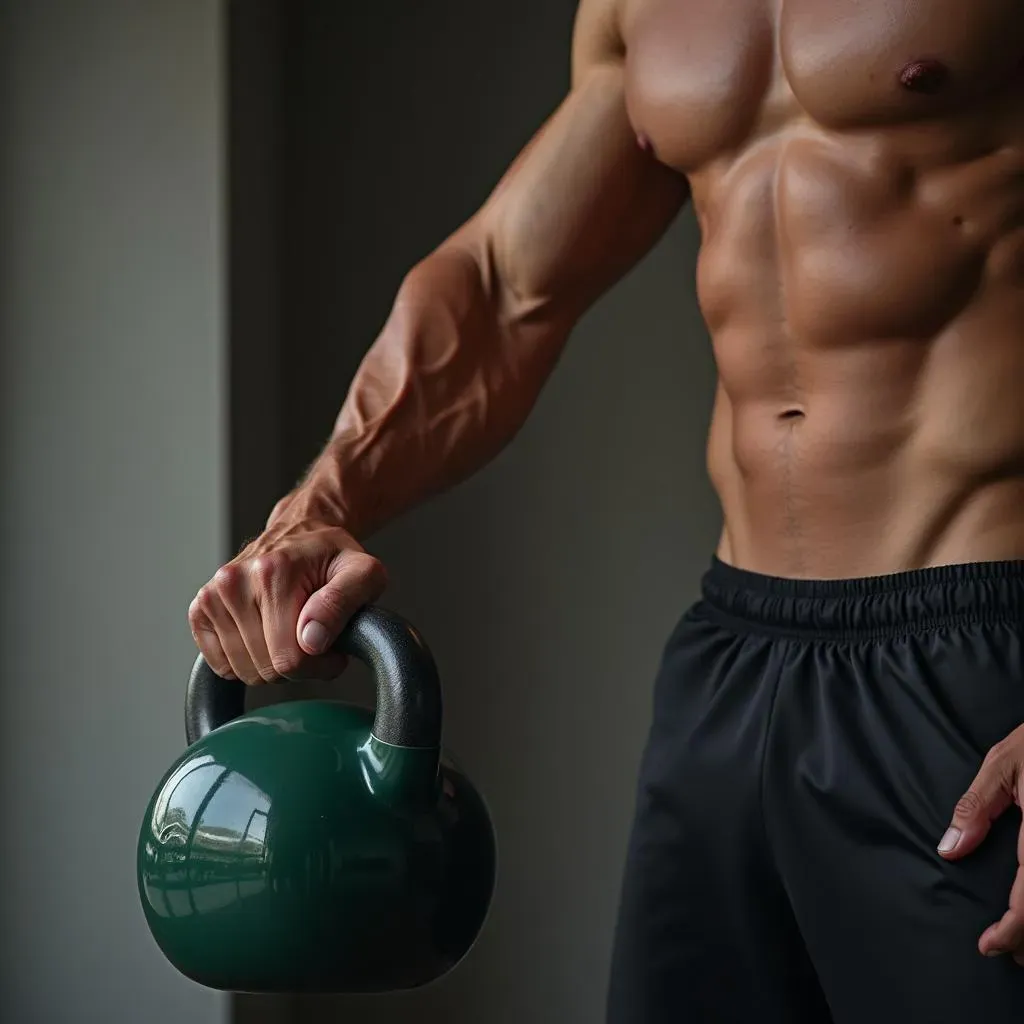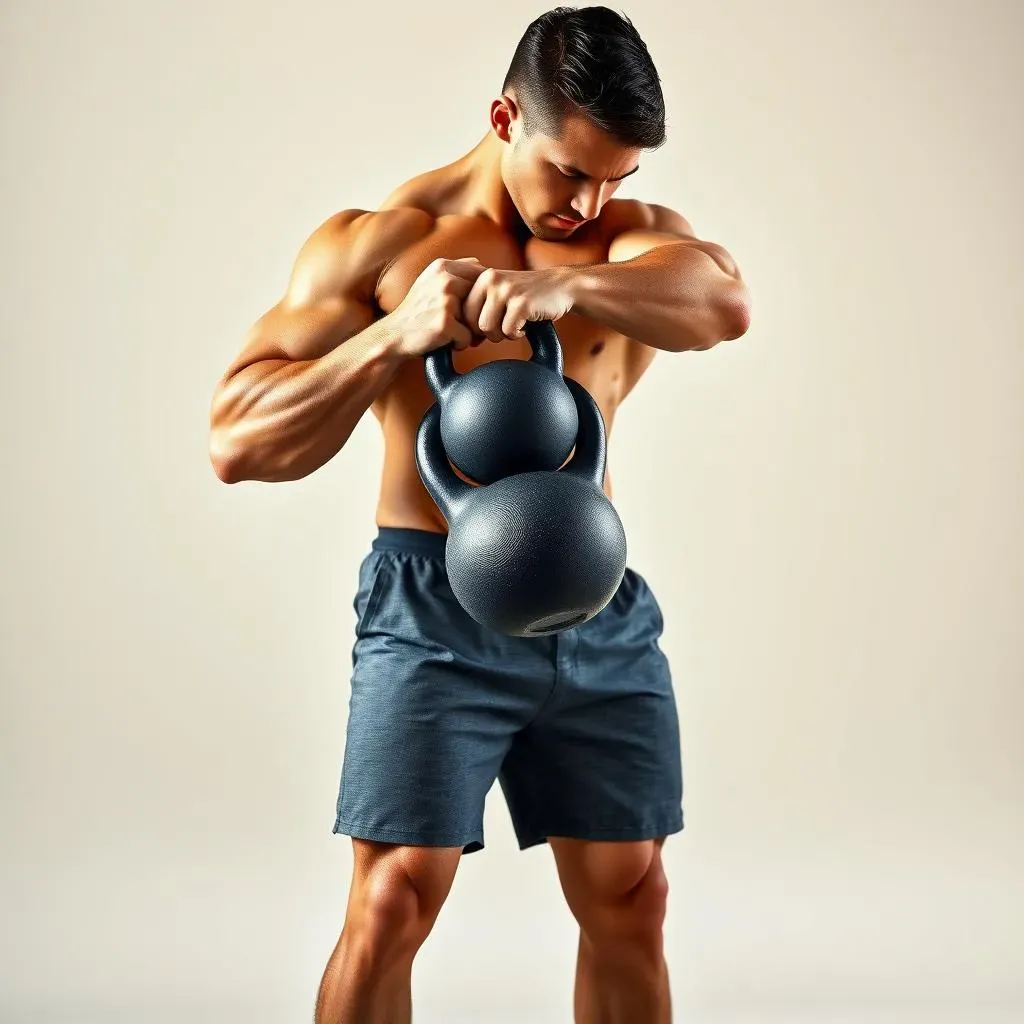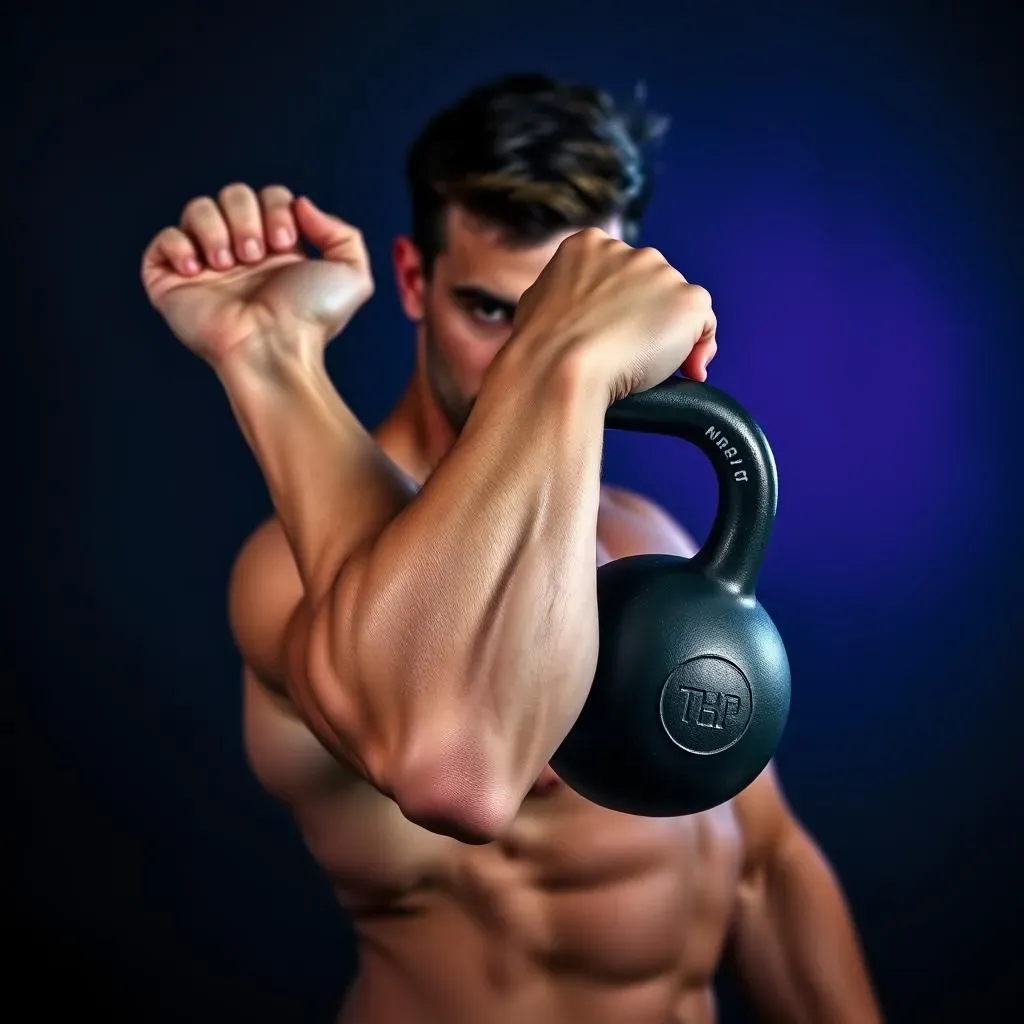Table of Contents
Ever look at those impressive biceps and wonder how they got so sculpted? Well, you might be surprised to learn that you don't need fancy gym equipment to achieve that. The bicep kettlebell curl is a fantastic exercise that can help you build strength and definition, all with just one simple piece of equipment. I'm here to show you how to get the most out of this move. We're gonna skip the complicated stuff and get straight to the good part: how to make your arms look awesome. This isn't just another workout guide; it's a roadmap to bigger, stronger biceps using the versatile kettlebell. In this article, we'll explore why kettlebells are so effective for bicep curls, break down the perfect technique step-by-step, and I'll even throw in some variations to keep things interesting. So, grab your kettlebell, and let's get curling!
Why Kettlebells Are Great for Bicep Curls

Why Kettlebells Are Great for Bicep Curls
The Unique Shape Advantage
so picture this: a dumbbell and a kettlebell, side by side. They both can add weight to your workout. However, the kettlebell's weight is located below the handle, not evenly distributed like a dumbbell. This off-center weight makes your muscles work harder to stabilize the kettlebell throughout the bicep curl. It's like your biceps are always playing catch-up, which is a good thing for growth. The uneven weight distribution engages more of your forearm muscles too. It's not just about the bicep, it's about building overall arm strength.
Grip Variety and Forearm Activation
Another cool thing about kettlebells is how you can grip them. You can grab the handle like you would a dumbbell, or you can hold the bell itself. This is known as the "bottoms-up" grip. Holding the bell makes your forearms work even harder to keep it steady. It can feel a little shaky at first, but that's your muscles learning to adapt. It's like giving your forearms a secret workout while you're focusing on your biceps. The varied grips help you to target different muscle fibers, leading to more well-rounded arm development.
Kettlebell Benefit | Why It's Good for Biceps |
|---|---|
Off-center weight | Forces stabilizing muscles to work harder |
Grip variety | Targets different muscle fibers and forearms |
Functional strength | Mimics real-life movements, improving overall strength |
Functional Strength and Real-World Application
Unlike some gym machines that isolate muscles, kettlebells engage your whole body. When you do a bicep kettlebell curl, you're also working your core and shoulder muscles to maintain balance. It's not just an arm workout; it's a full-body move. This kind of functional strength translates to everyday life, like carrying groceries or lifting heavy objects. So, you're not just building bigger biceps; you're building practical, real-world strength. It's like upgrading your body's software, making it more efficient and powerful.
How to Do a Perfect Bicep Kettlebell Curl

How to Do a Perfect Bicep Kettlebell Curl
Setting Up for Success
Alright, let's talk about getting this bicep kettlebell curl right. First off, stand with your feet about shoulder-width apart. This gives you a solid base. Grab your kettlebell with an overhand grip, like you're shaking hands with it. Let it hang down in front of you. Keep your chest up, shoulders back, and core tight. Think of it like you're bracing for a little punch to the gut. This stance keeps you stable and helps you focus on the bicep movement. Before you even start curling, make sure you're not leaning back. A slight lean forward is okay, but we don't want to turn this into a back exercise.
Now, the curl itself. Keep your elbows tucked close to your body. This is a bicep curl, not a shoulder exercise, remember? As you bring the kettlebell up, focus on squeezing your bicep. It’s not about how fast you can move the weight; it’s about how well you can control it. Imagine you're trying to touch your shoulder with the kettlebell. At the top, pause for a moment, and feel that bicep working. Then, slowly lower the kettlebell back down to the starting position, keeping that control all the way. Don’t just let it drop. It's a marathon, not a sprint.
The Importance of Control and Breathing
Control is key with the kettlebell curl. Avoid swinging the weight up; use your bicep muscle to lift. If you find yourself swinging, it’s a sign that the weight might be too heavy. It’s better to use a lighter weight and focus on good form than to heave a heavy one with bad form. The goal is to feel the burn in your bicep, not in your back or shoulders. Think of it as a slow dance with the kettlebell. Every movement should be deliberate. Remember, quality over quantity.
Don't forget to breathe during your curls. Inhale as you lower the kettlebell, and exhale as you curl it up. Breathing helps you maintain a steady rhythm and avoid holding your breath, which can lead to dizziness. Proper breathing is like the secret sauce of any workout; it helps you stay focused and powerful. Just like you wouldn't try to run a race holding your breath, you shouldn't try to curl without breathing.
Key Technique Points | Why It Matters |
|---|---|
Shoulder-width stance | Provides stability and balance |
Elbows tucked in | Isolates the bicep muscle |
Controlled movement | Engages the muscle properly and prevents injury |
Proper breathing | Maintains rhythm and avoids dizziness |
Bicep Kettlebell Curl Variations and Tips

Bicep Kettlebell Curl Variations and Tips
Hammer Curls
Alright, so you've mastered the standard bicep kettlebell curl, what's next? Well, let's talk about hammer curls. Instead of curling the kettlebell up with your palm facing up, you keep your palm facing your body throughout the movement. This grip targets the brachialis muscle, which lies underneath your bicep. Hitting this muscle will help to push your bicep up, making your arm look fuller. It's a subtle change in the grip, but it makes a big difference in how your arm feels. It's like adding a new level to your bicep workout. I always find this variation is good for adding some extra bulk to my arms.
Another fun variation is the concentration curl. Sit on a bench with your legs spread, and lean forward, placing your elbow on the inside of your thigh. Now, curl the kettlebell up, focusing on squeezing your bicep. The setup minimizes momentum and really isolates your bicep for maximum growth. It can be a little awkward at first, but it's a great way to really feel the bicep working. It's like giving your bicep its own private workout session.
Variation | Grip/Setup | Muscle Focus |
|---|---|---|
Hammer Curl | Palms facing body | Brachialis |
Concentration Curl | Elbow on inner thigh | Bicep isolation |
Bottoms-Up Curl | Holding the bell | Forearm and bicep stabilization |
Bottoms-Up Curl
And let's not forget the bottoms-up curl. Instead of gripping the handle, you hold the kettlebell by the bell itself. This is a balance challenge as much as a strength exercise. Keeping the kettlebell upright requires a lot of forearm and bicep stabilization, and it really amps up the intensity. It will feel shaky at first, but that's your body getting stronger. It's like learning to ride a bike, a bit wobbly at first, but you quickly get the hang of it. When you can control the bottoms-up curl, you know you've got a good grip.
A quick tip: don’t try to lift too much weight. Start with a lighter kettlebell and focus on good form. It's better to do ten reps with good form than five reps with bad form. And remember, consistency is key. Try to incorporate these variations into your workout routine a few times a week. The more you work at it, the better you'll get. It's all about the journey, not the destination.
Tips for Success
Remember, proper form is more important than lifting heavy. If you’re struggling with the weight, go lighter. It’s not a race; it’s about building strength. And don't forget to breathe. Inhale as you lower the kettlebell, exhale as you lift it. Proper breathing helps you stay focused and powerful. It's like the fuel that keeps your body going. Finally, listen to your body. If you feel pain, stop. It’s okay to take a break and come back stronger.
- Start with a lighter weight.
- Focus on proper form.
- Control each movement.
- Don't hold your breath.
- Listen to your body.
Wrapping Up Your Bicep Kettlebell Curl Journey
So, there you have it—the bicep kettlebell curl, a simple yet powerful exercise for building those arm muscles. We've covered why kettlebells are great, how to do the curl properly, and even some cool variations to keep your workouts fresh. Remember, consistency is key. Don't expect to see huge biceps overnight, but with regular practice and good form, you'll definitely start feeling and seeing the results. Now, go grab that kettlebell and get to work. Your biceps will thank you, and so will I, because it means I've done my job.